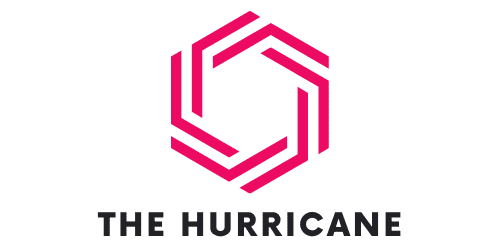European regional development fund 2021-2027: key priorities

The European Regional Development Fund (ERDF) 2021-2027 aims to address key priorities to enhance regional growth and innovation. With a focus on fostering a smarter, more competitive Europe, advancing a greener transition, and ensuring balanced regional prosperity, the ERDF’s strategy is designed to spread economic benefits widely and support sustainable development. This article examines the fund's key priorities, funding allocation criteria, and expected outcomes, highlighting its vital role in driving forward Europe's cohesion policy 2021-2027. Understanding these priorities can guide regions to effectively leverage structural funds for meaningful progress.
Key priorities of the European regional development fund 2021-2027
The European Regional Development Fund (ERDF) is a crucial component of the European structural funds, aiming to enhance economic, social, and territorial cohesion across the European Union. For the period 2021-2027, the ERDF has set forth several key priorities, aligning with the broader cohesion policy 2021-2027.
Dans le meme genre : What Are the Key Steps in Developing a Successful UK-Based Subscription Box Service?
Policy objective 1: fostering a more competitive and smarter Europe
The first policy objective aims to create a more competitive and smarter Europe by promoting innovation, digitization, and business competitiveness. This includes investments in research and development, supporting small and medium-sized enterprises (SMEs), and enhancing digital infrastructure. The focus is on modernizing industries and ensuring that businesses can compete on a global scale.
Policy objective 2: advancing a greener, low-carbon transition
The second policy objective centers on advancing a greener, low-carbon transition. This involves significant investments in renewable energy, energy efficiency, and sustainable urban mobility. The goal is to move towards a net-zero carbon economy, enhancing resilience against climate change. This objective also includes funding for environmental protection and resource efficiency projects.
A voir aussi : How to Create a Robust Disaster Recovery Plan for UK Small Business IT Systems?
Thematic concentration and regional prosperity
The concept of thematic concentration ensures that ERDF support is targeted based on regional and Member State prosperity levels. This approach maximizes the impact of investments by focusing resources on the most critical areas. For instance, regions with lower prosperity levels receive more substantial support to address their specific needs, fostering balanced regional development across the EU.
For more detailed information on the European Regional Development Fund and its priorities, you can visit https://www.welcomeurope.com/en/programs/erdf-european-regional-development-fund/.
By focusing on these key priorities, the ERDF aims to support sustainable growth and development, ensuring that all regions can benefit from the opportunities provided by the cohesion policy 2021-2027.
Funding allocation and criteria
Funding allocation within the ERDF is meticulously designed to promote regional economic development and support disadvantaged regions Europe. The criteria for funding allocation prioritize areas with the greatest need, ensuring that resources are effectively directed to foster balanced growth across the EU.
Criteria for funding allocation
The ERDF applies a set of criteria to determine funding allocation. These include regional GDP per capita, unemployment rates, and specific socio-economic challenges. Disadvantaged regions Europe are given precedence to ensure they receive the support needed to overcome structural deficiencies and enhance their economic prospects.
Focus on disadvantaged regions
A significant portion of the ERDF budget is dedicated to disadvantaged regions Europe. This focus aims to bridge the development gap between more prosperous and less developed areas. For example, regions with lower prosperity levels receive more substantial support, which is crucial for fostering balanced regional development and ensuring that no area is left behind.
Examples of supported projects
The ERDF supports a wide range of projects that contribute to regional economic development. These include investments in infrastructure, innovation, and environmental sustainability. For instance, projects may involve the construction of new transport networks, the development of renewable energy sources, or the modernization of local industries to enhance competitiveness. These initiatives are designed to create jobs, promote sustainable growth, and improve the quality of life for residents in disadvantaged regions.
Impact and expected outcomes
The European Regional Development Fund (ERDF) is pivotal in promoting sustainable growth EU and fostering innovation and research Europe. By channeling investments into critical areas, the ERDF aims to achieve substantial and long-lasting impacts on regional development.
Promoting sustainable growth and innovation
The ERDF's emphasis on sustainable growth EU is evident through its substantial funding for environmental investments. This includes projects aimed at enhancing energy efficiency, developing renewable energy sources, and improving sustainable urban mobility. These initiatives not only contribute to a greener economy but also create jobs and stimulate economic activities in regions across the EU.
Supporting SMEs and research initiatives
A significant portion of ERDF funding is dedicated to supporting SME support Europe and research initiatives. By providing financial assistance and resources, the ERDF helps small and medium-sized enterprises (SMEs) innovate and grow. This support is crucial for fostering a competitive business environment and encouraging technological advancements. Additionally, investments in research and development drive innovation, ensuring that Europe remains at the forefront of global technological progress.
Expected outcomes and impact on regional development
The expected outcomes of these investments are multifaceted. Regions benefiting from sustainable growth EU and innovation and research Europe are likely to experience enhanced economic resilience, reduced unemployment rates, and improved quality of life. The focus on SME support Europe ensures that even the smallest businesses have the opportunity to thrive, contributing to a more balanced and inclusive economic landscape across the EU.
